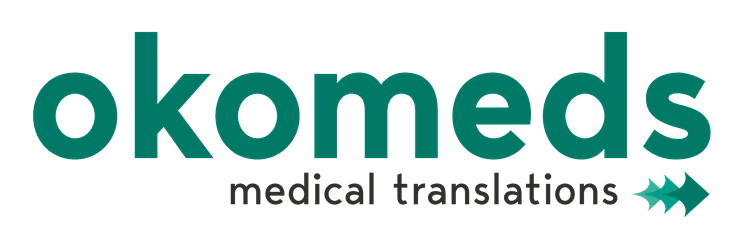
26 Ago Translating e-learning materials for medicine and pharma
Conducting clinical trials is a highly complex and demanding process. Coordinating multiple teams, ensuring compliance with strict regulations and maintaining clear communication across borders are just some of the challenges that clinical research organisations face. In this context, e-learning materials have emerged as a crucial tool to support research teams by providing accessible, standardised and high-quality training.
Here we explore the benefits of developing and translating e-learning materials for medicine and pharma, showing how localised content can improve understanding, communication and compliance.
What are e-learning materials in clinical research?
E-learning materials include digital resources such as:
- Videos and recorded lectures
- Interactive modules and simulations
- Presentations and infographics
- Multimedia content accessible remotely
These resources are designed to provide clinical research teams with the training and knowledge they need to follow clinical trial protocols accurately and meet regulatory requirements. They allow professionals to learn at their own pace while ensuring consistent delivery of crucial information.
Why e-learning matters
In a sector governed by strict compliance, continuous education and training are critical for keeping teams up to date. However, global teams face practical obstacles: on-site training is expensive, time-consuming and challenging to coordinate across multiple countries.
Remote training is a flexible solution, but to be effective, it must be adapted to the learners’ languages and cultural contexts. This is why many pharmaceutical companies collaborate with professional language services providers to create customised, multilingual e-learning experiences.
E-learning platforms in pharma can cover:
- Compliance and standard operating procedures (SOPs)
- Product knowledge and safety protocols
- Sales techniques and customer engagement
Centralising training management not only ensures consistency but can reduce content deployment costs by up to 40%, allowing faster updates and improved scalability.
Key advantages of e-learning for:
Employees:
- Flexible access to training on their own schedule
- Ability to learn at their preferred pace
Managers:
- Tracking tools to monitor progress and identify knowledge gaps
- Analytics to improve training effectiveness
Companies:
- Easily update and customise content for global teams
- Maintain compliance and standardisation across regions
Why should you translate e-learning materials?
While English is the dominant language in clinical research, not all team members are native English speakers. Language barriers can significantly reduce comprehension, leading to mistakes and decreased productivity. Translating e-learning materials into the native language of each team ensures that every member fully understands protocols, procedures and technical concepts.
Medical and pharmaceutical training is designed to:
- Deliver precise technical knowledge
- Reinforce clinical skills
- Ensure safe and compliant practices
Poorly localised content can hinder learning, reduce engagement and even create risks to patient safety. Conversely, effective translation enhances user experience and facilitates certifications in different countries by respecting regional norms and language requirements.
The benefits of translating e-learning materials
- Improved understanding
Learning in one’s native language reduces cognitive load and helps learners retain complex information. Accurate translation ensures that critical instructions and procedures are clearly understood, minimising the risk of errors in high-stakes environments.
- Higher motivation and engagement
When e-learning content is in the learner’s language it feels relevant and personalised. This increased relevance fosters engagement, motivating professionals to complete training and actively apply their knowledge.
- Enhanced communication and collaboration
When all team members can fully comprehend training materials, communication improves. Teams are better equipped to collaborate, solve problems efficiently and avoid misunderstandings that could impact study outcomes.
- Increased compliance
Translation ensures that protocols and procedures are consistently understood across the team. This reduces errors, strengthens adherence to regulations and supports organisational compliance objectives.
Best practices for effective localisation
Translating e-learning materials for medicine and pharma goes beyond literal translation. It requires thoughtful localisation to adapt content to cultural, linguistic and regulatory requirements. Key steps include:
- Assess original content
Evaluate whether materials are culturally adaptable. Visuals, examples or references may need adjustment. - Collaborate with medical experts
Subject-matter experts validate accuracy and prevent critical errors in terminology and context. - Adapt audiovisual materials
Videos, voiceovers and subtitles should reflect the language, tone and cultural expectations of the target audience. - Follow regulatory standards
Ensure compliance with accreditation standards such as SCORM, CME or local licensing requirements. - Test with real users
Piloting content with professionals in different regions identifies comprehension gaps and ensures course effectiveness.
Maximising the impact of global medical training
Translating e-learning materials for medicine and pharma is essential to improve comprehension, enhance engagement, ensure compliance and ultimately support patient safety.
By combining linguistic expertise with medical knowledge, professional localisation ensures that e-learning content is accurate, culturally relevant and tailored to the needs of diverse teams. For companies committed to excellence in clinical research, investing in high-quality medical translation is not just a matter of convenience—it’s a strategic necessity.
When your e-learning materials speak the language of your learners, understanding deepens, collaboration strengthens and compliance is achieved more efficiently. The result: safer practices, more capable teams and smoother global operations.






Sorry, the comment form is closed at this time.